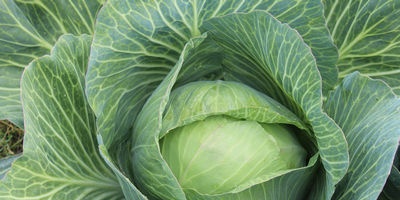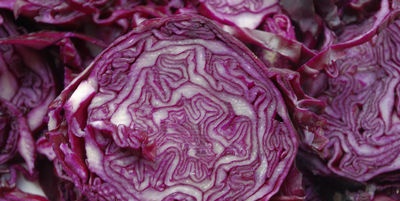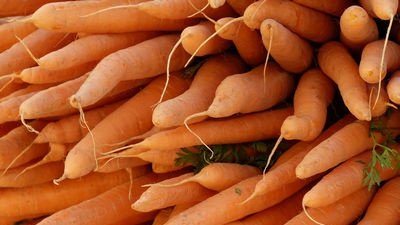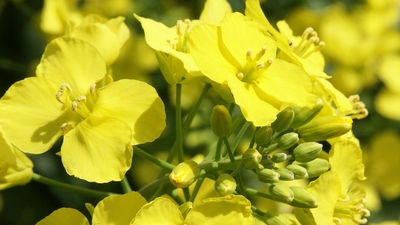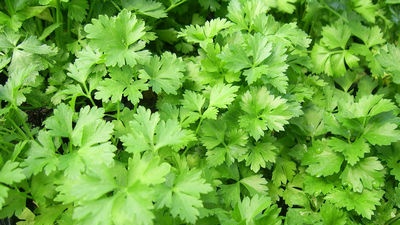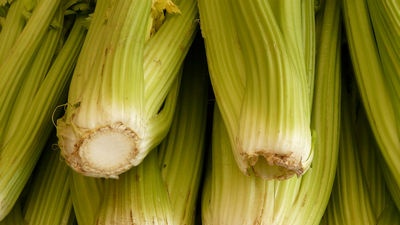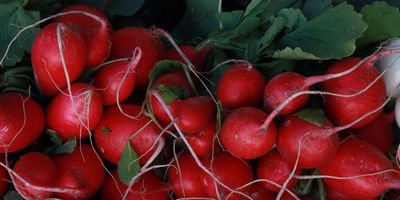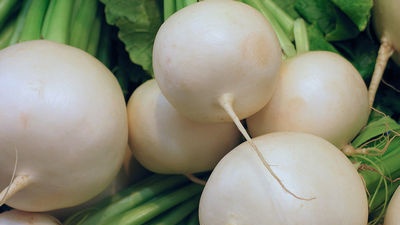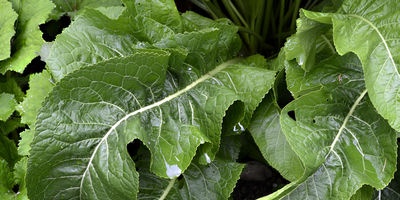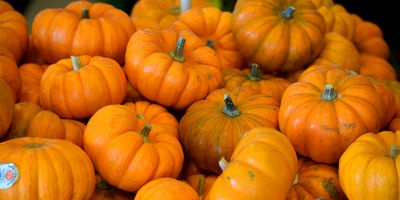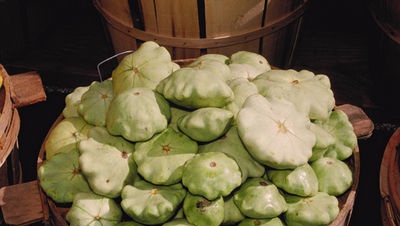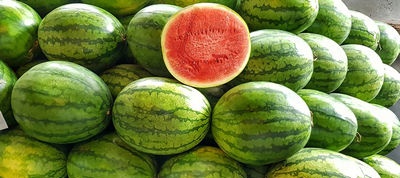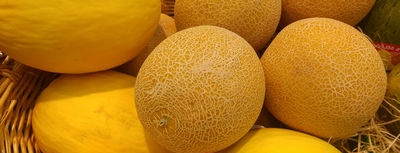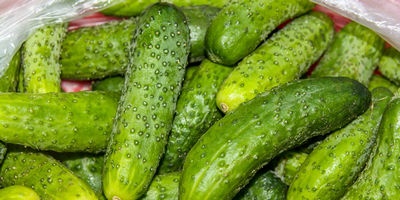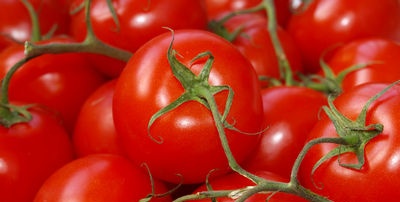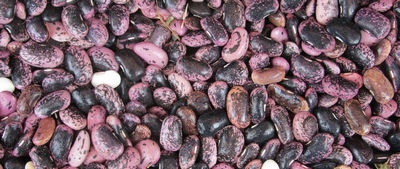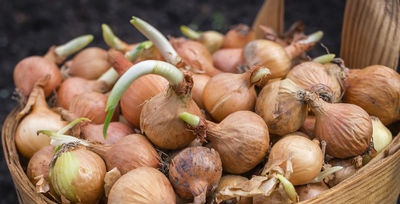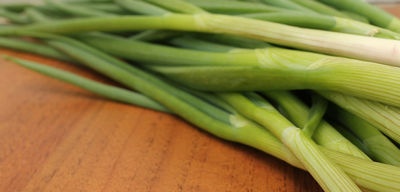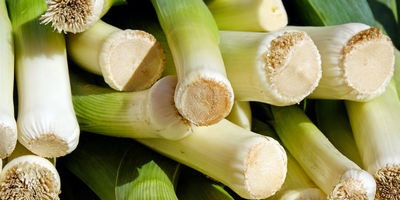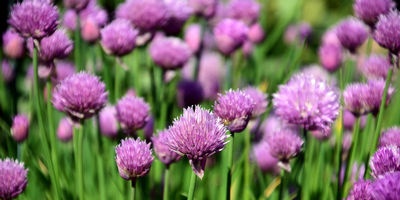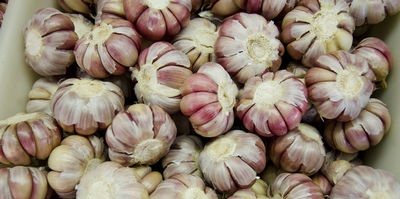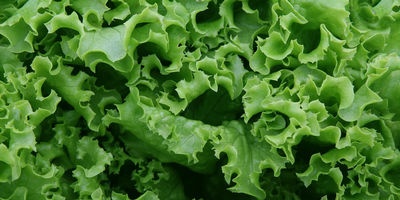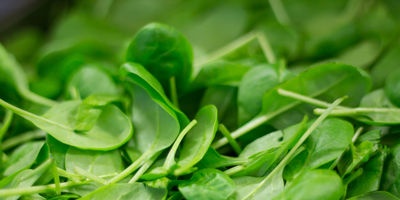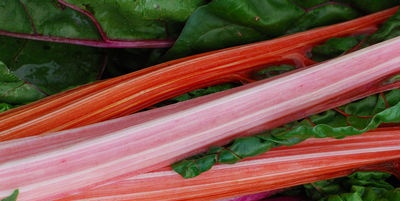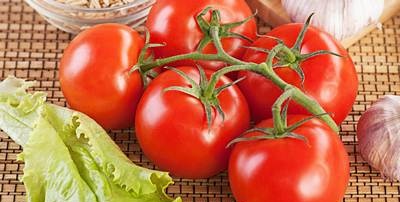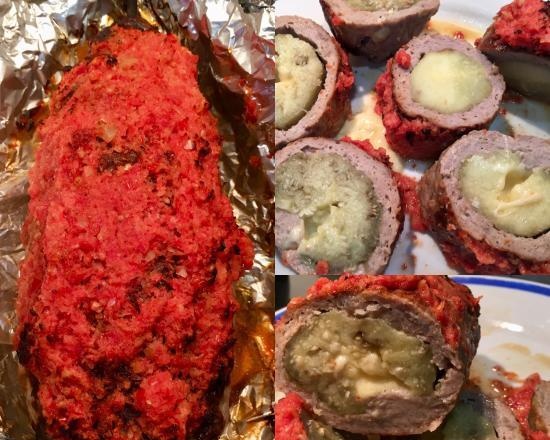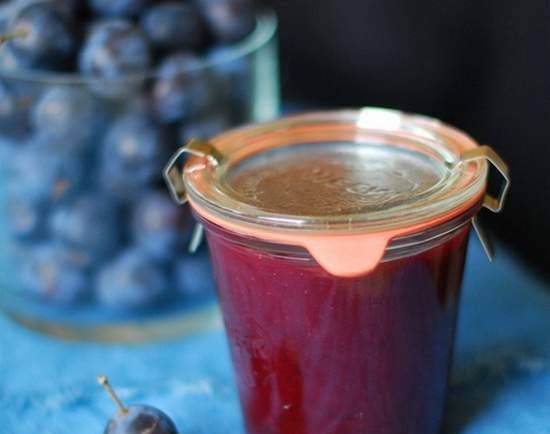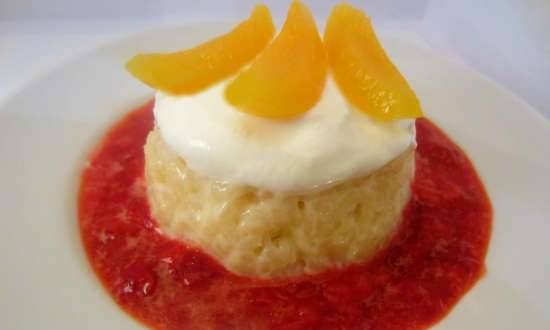Product presents passport (about potatoes and vegetables) |
|
Potatoes
As you know, it is divided into early maturing, mid-maturing and late-maturing varieties. (The latter two lend themselves better to storage throughout the winter.) In terms of taste, the best reputation has long been earned by such varieties as Epikur, Lorkh, Peredovik and some others, and I must say that the richness of the product with valuable food ingredients is usually reflected to his taste. CabbageThe main species are white, red, Brussels, Savoy, colored and kohlrabi, which in turn are subdivided into varieties.
White-headed cabbage Is the most widespread and popular vegetable. Fresh, it contains up to 70 mg% of vitamin C, most of which is preserved during heat treatment. But this is a speech, so to speak, about a "product from the garden", where the best late-ripening varieties such as "gift", "amagor", "wintering", etc. are grown. But their stale heads of cabbage, as well as other varieties, are more modestly saturated with this vitamin - about 25 mg%. This is also quite a lot. It is characteristic that in a fermented form the product retains up to 20% of vitamin C. But besides, it also contains other vitamins, 3.8% sugar, 1.4% protein, 0.2% organic acids, 1.7% fiber, 0.8% minerals. Early ripening varieties (such as "number one"), although poorer in the content of biologically active substances, go on sale in late spring and help fight vitamin deficiency. Mid-ripening ones ("glory mushrooms", "Braunschweig", for example) ripen in the middle of summer and are suitable not only for fresh consumption, but also for fermentation. And the named late-ripening (plus and medium-ripe "Belarusian"), having a dense head of cabbage, can be stored in cellars until the next harvest.
Red cabbage twice as rich as white cabbage in vitamin C content, although it contains less sugar (1.7%), protein and amino acids (1.8%). In terms of ripening terms, its varieties are at the level of early and mid-season varieties of white cabbage (for example, "stone head" and "gako"), but fresh it remains much worse - for three months, and even then at a temperature of 0 ° C.
Brussels sprouts, having small, lemon-sized heads, is found on sale only in the midst of autumn. It is extremely tasty in boiled form and in soups. And it is not surprising: its 100 g contains 10 mg of vitamin C.It also contains 3.7% sugar, 4.8% amino acids and protein, not to mention a large set of other biologically active substances. The preservation is about the same as that of red cabbage.
Savoy cabbage (loose green heads of cabbage) in vitamin C is twice poorer than the Brussels one, but it also contains vitamin A, not inferior to it in terms of sugar, nitrogenous substances, and trace elements. Nondescript wrinkled heads of cabbage leaves are a dressing for delicious soups, and they are excellent when boiled.
Cauliflower (housewives know that only her heads without leaves are eaten) This is a rather perishable product. Soups and main courses made from it are delicious and nutritious. Vitamins C - up to 70 mg%, sugar - 3%, minerals - 0.8%. Before cooking, cauliflower is placed in salted cold water for half an hour, but not to improve the taste, but to get rid of small insects crawling into the flowers.
Kohlrabi, in which a fleshy stem is eaten in boiled and raw form, bypasses all the listed types of cabbage vegetables in sugar content (4.7%), is extremely rich in vitamin C (100 mg%) and is well "charged" with other biologically active substances. But on sale it is still rare. Carrot
Experienced housewives appreciate table varieties of carrots for such qualities as tender sugary pulp and not too thick core in root crops. (The latter can be small, but preferably bright in reddish-orange color and sweet in taste.) Fresh red carrot it has almost no serious competitors among vegetables in terms of vitamin A content (more precisely, its provitamin carotene) - 7.2 mg%. This is more than butter, eggs, sour cream. But along with this advantage in carrots - up to 9% sugar, 0-8% pectin substances and the same amount of potassium, sodium, phosphorus and other mineral salts. The highest nutrient content in those root vegetables that are not yet fully ripe. Rarely does a first and second course do without carrots in its preparation (at least in the form of sautéing), so we need this root vegetable all year round. Beet
Its best table varieties - "incomparable", "Bordeaux", "Don flat", "Egyptian", "mushroom flat" and others - are eaten not only in the form of perfectly preserved root crops in winter, but even in the form of young tops (leaves and petioles of unripe beets). The latter is important. So, if in the root crop itself - up to 10 mg% of vitamin C, then in the tops - 60! Other varieties of ripe table beet gain up to 14% sugar, and in addition, they contain 1.3% of nitrogenous substances most valuable for the body. Their set is presented in such a successful combination that medicinal drugs are also prepared from beets (for liver diseases, hypertension, constipation, etc.). The culinary possibilities with the participation of beetroot are very diverse (first, second, cold dishes and even drinks). Swede
Climbing even to high latitudes, where other vegetables ripen worse, rutabagas do not lose their culinary authority among housewives from the middle lane, although they are sold less often here. Table varieties are distinguished from forage varieties by the bright yellow color of the root crop, the delicate taste of juicy pulp (in its raw form). It does not matter that a root crop, for example, "Swedish" or "Krasnoselskaya" swede, will weigh up to a kilogram - this is not a sign that the product is of inferior quality. Eating fresh rutabagas, we get up to 30 mg of vitamin C (in this, rutabagas can compete with raspberries). But even with heat treatment, the vitamin is preserved. The culinary recipe is quite rich in rutabaga dishes (first, second, cold dishes, vinaigrette). In winter, rutabaga is preserved no worse than potatoes. Celery and parsley
We usually use both of these vegetables as a seasoning for various dishes (although there are recipes, for example, for celery salads). Parsley is usually found in two common varieties - "sugar" and "ordinary" (or "bordovician"). The latter is not so early ripening, its root crop is more authentic and not so much cone-shaped as in the "sugar" one as in cylindrical shape, and its heart-wine is not white, like that of that, but yellowish. All this is recommended to be noted because the roots of "ordinary" are preserved better. Although not much parsley is added to this or that dish, it gives it many of the most valuable nutritious ingredients. So, it contains 4% protein, more than 7% carbohydrates, 100 mg% vitamin C, up to 10 mg% carotene, as well as vitamin B1 and B2, PP and K, folic acid, essential oils (they also flavor dishes, add a spicy taste).
Celery is subdivided into root, petiole and leaf types, and each has its own varieties. For the winter, the roots and leaves are dried. As a spice, celery is indispensable in a number of dishes and preparations due to its rich content of essential oils (in the leaves - 100 mg%), as well as vitamins C, B, B1, PP. Radish and radish
Both vegetables are eaten raw and are in many ways related in nutritional value to the body, since both contain essential oils, have a pleasant pungent taste, and also the more benign, the denser and juicier. Radish contains, in addition to the named oils, 1.23% protein, 3.72% carbohydrates, 25 mg% vitamin C, B vitamins, about 1% sugar, 0.8% fiber, 0.74% mineral salts. Some late-ripening varieties such as Dungan can be kept fresh throughout the winter. Up to 4 months, it is also possible to maintain "zenith" and "red giant".
A radish contains 6 times more sugar, twice as much carbohydrates than a radish, but, for example, vitamin C is slightly less - 20 mg%. Its summer varieties are more delicate in taste, while the late ones are harder and sharper, and they keep well in winter. Too "evil" radish can be tasted better in two ways. Add, for example, grated carrots to the grated radish. Or let's do this: salt the grated radish and, stirring, letting the juice out for 15 minutes, squeeze out part of it, replacing it with vegetable oil or sour cream. It is known that some diseases have been treated with radish for a long time, but it (like spicy radish) is contraindicated in diseases of the liver, kidneys and stomach. Horseradish
The roots and leaves of a cultivated vegetable are used not only as a popular hot seasoning for various dishes and preparations. In a number of old Russian recipes, horseradish is also presented as a cold appetizer. It contains over 100 mg% vitamin C, B vitamins, carotene, mustard oil, fiber and nitrogenous substances. Due to the phytoncidal effect of horseradish on harmful microorganisms, it is not only used for medicinal purposes, but helps to keep various products from spoiling during storage. Pumpkin vegetablesThis group of vegetables usually includes those that contain seeds in the core of the pulp, covered with skin.
Pumpkin table varieties, among which are very common "almond", "honey white", "interception", "Mozoleevskaya-15" and some others, are not rich in vitamins (for example, it contains only 3 mg% vitamin C and 5 mg% carotene). But on the other hand, it contains 6.5% sugar, 1.1% protein and 1.2% fiber, and in addition, pumpkin seeds contain up to 50% of the most valuable vegetable fat, which is not inferior in nutritional value to a number of types of nut butter. A lot of tasty things can be prepared from this vegetable, including dietary dishes, and its maturity is determined as follows: if its stalk is dried, then we can safely buy a pumpkin. The most delicious will be the one with yellow flesh (it also contains more carotene).
Zucchini have no less rich culinary recipe than pumpkin, and are at least somewhat inferior to their “relative” in terms of the set of nutrients, for example, as well as the duration of storage (at room temperature for 2-3 days, in the refrigerator - up to 20), however, they have the advantage that they ripen early and are sold in our strip from June to September. They contain about 3% sugar, other carbohydrates, fiber, protein and minerals, but all of this is about two times less than pumpkin, but 5 times more vitamin C.
Patissons can grow everywhere, but for some reason they are not often grown here. Probably because the ripe fruits of this "plate pumpkin" are not used for food.They are either torn unripe, still having a delicate skin and small seeds, or even earlier, when they are in the ovary. There are recipes for dishes from squash, for which the latter are boiled, stuffed, fried, but most of all they are popular in marinade.
Watermelon give out, like a pumpkin, their ripeness by a dried stalk, and in addition, by a more sonorous sound than that of unripe ones, when tapping (clicking) with a finger. Depending on the variety and region of cultivation, this melon crop can contain from 7 to 12% sugar. Sometimes it also contains a lot of vitamin C. Watermelons are consumed natural, but they can be poured with sugar syrup, making "raw compote". You can also salt them, thus getting an excellent appetizer or side dish for meat and fish dishes. Some varieties of watermelons are used to prepare a special delicacy - candied fruits.
Melons among melons and gourds, they are distinguished by a higher sugar content than, for example, watermelons (from 8 to 15% sugar), the presence in them of a considerable amount of carotene (up to 2 mg%), as well as mineral salts, protein, fiber, aromatic substances. At near-freezing temperatures, you can store the melons for up to 4 months, especially if you store them unripe. During storage melon become even sweeter. In natural form, they are best served chilled. You can make jam from them. It can be pickled, pasteurized and even dried in the sun, as is done in Central Asia.
Fresh cucumbers do not withstand long-term storage. They are poor in carbohydrates (only 2.5%), vitamins (for example, vitamin C is only 8 mg%) and other valuable ingredients, but the taste of cucumbers increases appetite, and therefore contributes to a more complete absorption of nutrients from other foods. This commendable quality is shown when consumed not only fresh, but also pickled or pickled cucumbers.
Tomatoes depending on the variety, they contain in mature form from 20 to 40 mg% vitamin C, surpassing even lemons, up to 2 mg% carotene, a significant proportion of organic acids and mineral salts. Fresh (if picked unripe, with a milky skin) can be stored in a cool room for up to a month and a half, gradually ripening. Both fresh tomatoes and preparations from them have the widest culinary application.
Eggplant and capsicum ripen in the southern regions and appear on sale in the middle lane almost simultaneously (late summer - early autumn). They are stored for a few days, and therefore they are immediately used either according to the recipe for main courses and snacks, or for preparations. Unripe eggplants with blue or purple skin and small seeds are the best product for preparing these dishes and, for example, caviar. They contain up to 7 mg% vitamin C, up to 3% sugar, up to 1.5% protein and up to 0.7% mineral salts. Sweet peppers (or vegetable peppers) have up to 200 mg% vitamin C in pods that are not yet reddened, and up to 300 in already densely colored pods! (In other words, here it overtakes even black currants.) Ripe sweet peppers, which are sometimes also called "Bulgarian", also contain up to 10 mg% carotene, leaving behind all other vegetables, and there is also a lot of sugar in it - 5.5%. The hostess revered bitter paprika especially as an excellent seasoning for the first, second courses and the same preparations. While it can be bought fresh, it is simply crushed for this purpose, but they try to salt or dry it for the winter. Legumes
Green pea is obtained from unripe peas of vegetable varieties, and the so-called "brain" green peas, in which up to 8% sugar, up to 3% starch, up to 7% protein, up to 40 mg% vitamin C (almost twice as much as Lemon!) and other valuable nutrients. But this is a freshly harvested product, and in canned there is a little less of this. Salads, soups, sauces, side dishes, dietary meals - this is a wide range of recipe use of the product.
Beans vegetable, too, like green peas, is harvested at milk ripeness.Preferred are "sugar" varieties of green beans, whose pods do not have fibers, and small beans-patches give "head start" to all vegetables in protein content (up to 3.5%), rich in starch (up to 4%), contain sugar (up to 2.5%) and vitamin C (15 mg%). The culinary uses are basically the same as those of the green peas. Onion vegetablesIn the domestic gardening, they are represented by a significant number of species, and among the latter such exotic ones as slug onions, multi-tiered onions, shallots and others. Let us dwell here on the types of well-known or fairly common.
Bulb onions we need literally every day in cooking. Everyone is more or less aware of its taste and nutritional benefits, as well as its therapeutic use. However, not everyone understands why, when chopping some varieties of onion, the hostesses involuntarily "cry", and with the onion of others, even drink tea with a bite. It's all about the saturation of the bulbs with volatile ether compounds, moreover, sulfur-containing and phytoncidal. But it is curious that the farther north a particular sort of onion is zoned, the more “angry” it is, and the farther south, the sweeter it is. Cooks often tend to have on hand onion spicy (for example, varieties "Rostov onion", "Rostov cubasty", "Strigunovsky", "Arzamas cubic", "Spassky", "Bessonovsky", "Garsky") or, at worst, peninsular ("one-year Siberian" , "Yalta", "one-year mushroom-702", "Bardetta", "one-year havsky-74"), and even to the sweet (like "Spanish-313", "Krasnodar G-35", "golden ball" or "Kaby ») They resort in special cases, or, so to speak, without fish. Onions - up to 7.5% sugar, 2.5% protein (that is, the same as in cauliflower rich in it), 10 mg% vitamin C (at the level of fresh cranberries), there is vitamin B1, fiber, mineral salts and, of course, substances that stimulate digestion.
Scallions Feather is also a very valuable culinary gift "from the bounty" of onions, for example, "Arzamas", "Bessonovsky" and the above "Rostov" varieties. Green feathers have even more vitamin C (about 25 mg%, which is almost the same as raspberries and red currants), although less protein and carbohydrates than bulbs. Feather onions are indispensable in cooking, but, naturally, in their place: when, for example, you need to make a salad, sprinkle a dish with fresh herbs or prepare a cake filling.
Leek grown in the south of our country, used (leg and juicy leaves) fresh, but sometimes boiled and fried. In some places it is even dried. It is characteristic that during storage of this wonderful vegetable, the content of vitamin C does not decrease, but increases, and even as: from 40-50 mg% to 75-85 mg%! Sometimes it surpasses onions in terms of the content of B vitamins, and besides, it also has carotene. Storage is not difficult: it is enough to sprinkle the leek in the cellar with sand.
Chives (aka chives and skoroda) gives early harvests in the Urals and in some regions of Siberia, but is grown almost everywhere where people are threatened with spring vitamin deficiency, since it contains a lot of vitamin C and carotene. Moreover, it is rich in iron.
Onion also saves from vitamin deficiency where winter temperatures are very low, because this perennial plant does not die at almost 50-degree frosts, and contains up to 105 mg% of vitamin C in the set of nutrients.
Garlic is a perennial, but frost-hardy plant and can be grown almost everywhere, but for some reason it comes to the counters of the middle lane mainly from the south. Often we cannot do without this valuable vegetable, indispensable in a number of first courses, in even more second courses, in pickles and marinades. Both onions and fresh garlic leaves are eaten. It contains 25% carbohydrates, 6.5% protein, arsenic compounds that have a therapeutic effect in a number of diseases (however, garlic is contraindicated for those suffering from gastrointestinal diseases). Vitamin C garlic provided at the level of lemon - 20 mg%! Leafy vegetablesThis is also a large group of vegetables, one listing of which would take a lot of space.We will restrict ourselves to those that can be more or less realistically found on sale today.
Leaf salad is remarkable in that its nutritional value, as well as taste, are in direct proportion to the freshness of the product. As soon as he turns yellow or wrinkles, just lie down in the light, and losses cannot be avoided. And the salad has a lot to lose. Leaf lettuce (or lettuce) contains 3-4 mg% carotene, 10 to 50 mg% vitamin C, as well as vitamin E, vitamin K and B vitamins, not to mention minerals. In addition to leaf lettuce, cabbage lettuce, romaine lettuce, watercress and a number of others have just as good nutritional qualities.
Spinach requires no less gentle handling than a salad, for even picking it shortly after watering or rain. we risk breaking the leaves. which become fragile from dampness, and having broken these young leaves (they are harvested before the stems appear), we will soon miss the most valuable food ingredients that have dietary value and are especially useful in baby food. The incredible "giftedness" of spinach is characterized by the following data: almost the same amount of protein as in cauliflower - 2.3%, carbohydrates - 1.7%, fats - 0.3%, mineral salts (including such important for the body as potassium, calcium, iodine) - 1%, carotene - 8 mg%, vitamin C - 50%, but in addition there are vitamins E, K, B1, B2 and others (almost a complete set). Mashed spinach is used to prepare the first courses, and in the second courses it participates in the form of mashed potatoes, flavored with other products for piquancy, as opposed to the too bland spinach taste. They eat it, of course, fresh.
Dill after harvesting from the garden, it is also superbly "charged" with nutrients, including up to 150 mg% vitamin C, up to 6 mg% carotene, 0.14 mg% vitamin B, natural sugars and proteins, trace elements and, of course, essential oils that stimulate digestion and flavoring cooked foods. But this wealth can be lost in just 2 days - dill cannot be stored longer. The same happens in the garden (when the dill overripe in excess of the required conditions). Therefore, culinary connoisseurs sow fresh dill seeds every 20 days all summer. Rhubarb
A herbaceous vegetable that is not afraid of frost, it is widely distributed in fields and gardens in areas with a temperate climate. Meaty rhubarb stalks are eaten. Already in May or June, they may appear on the shelves, and the re-harvest will be around September. Store the fresh rhubarb you bought wrapped in cellophane in the refrigerator, but no more than 6 days. To put the product into business, the hostess does not have to philosophize: the choice of recipes is large: soup-puree, fillings for pies, vinaigrette, sauce, jelly, jam, compote and even kvass. But you can't cook rhubarb in an oxidizing dish - ruin the product, ruin the dish. The nutritional benefits of rhubarb look quite solid: sugar - 2.3%, the same amount of organic acids, vitamin C - up to 25 mg%, there are other vitamins, useful trace elements, including calcium, phosphorus and magnesium, pectin is contained, which is known to be forms a jelly-like consistency in some foods after cooking. The taste of rhubarb is somewhat reminiscent of the taste of apples, and this is due to the content of citric and malic acids in it. B.P. Brusilov - Culinary savvy |
| With humor about cooking | Vegetable oils |
|---|
New recipes
 We will understand the advantages of potatoes and a number of vegetables, taking into account the content of basic vitamins and other biologically active substances in them.
We will understand the advantages of potatoes and a number of vegetables, taking into account the content of basic vitamins and other biologically active substances in them.
